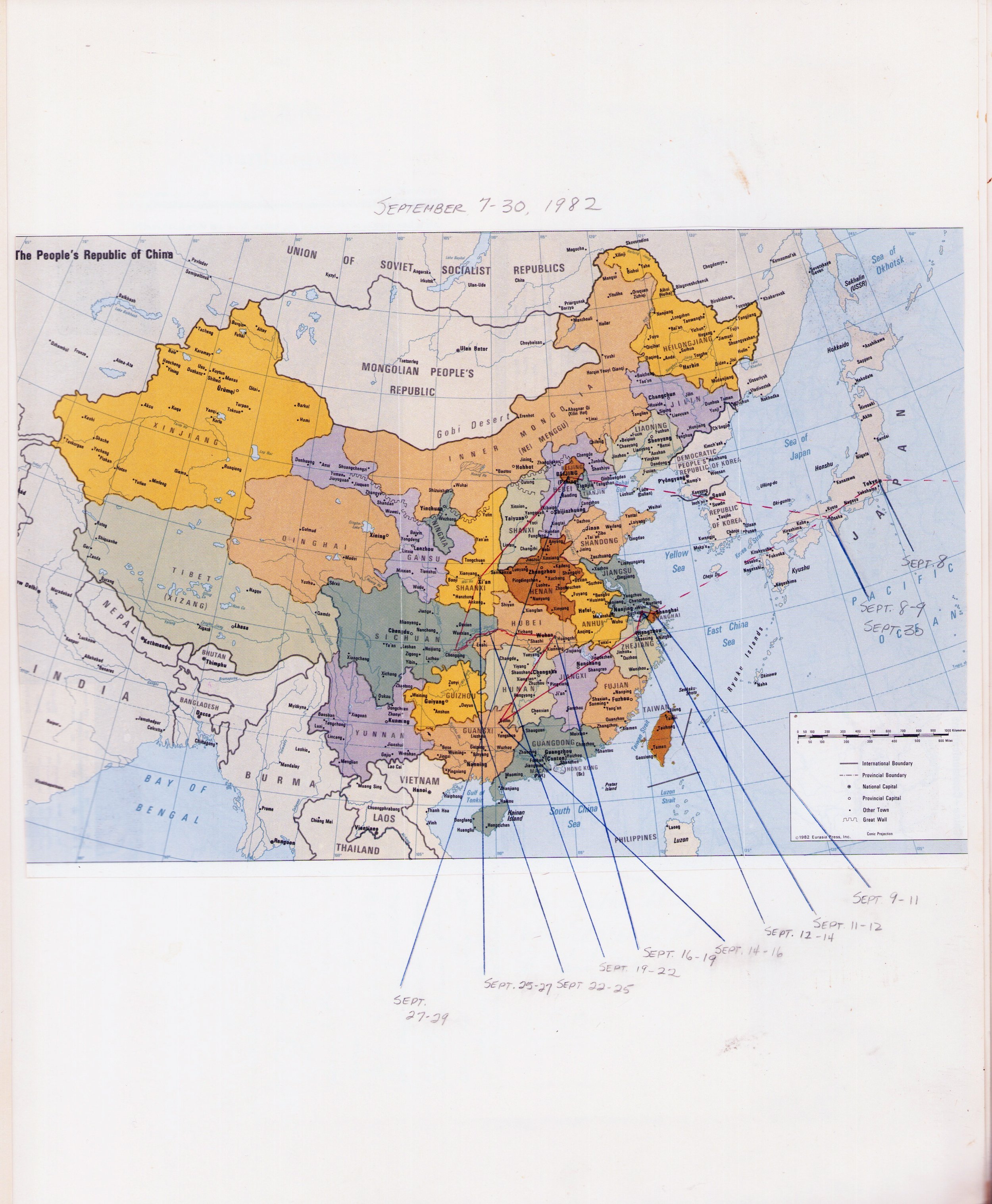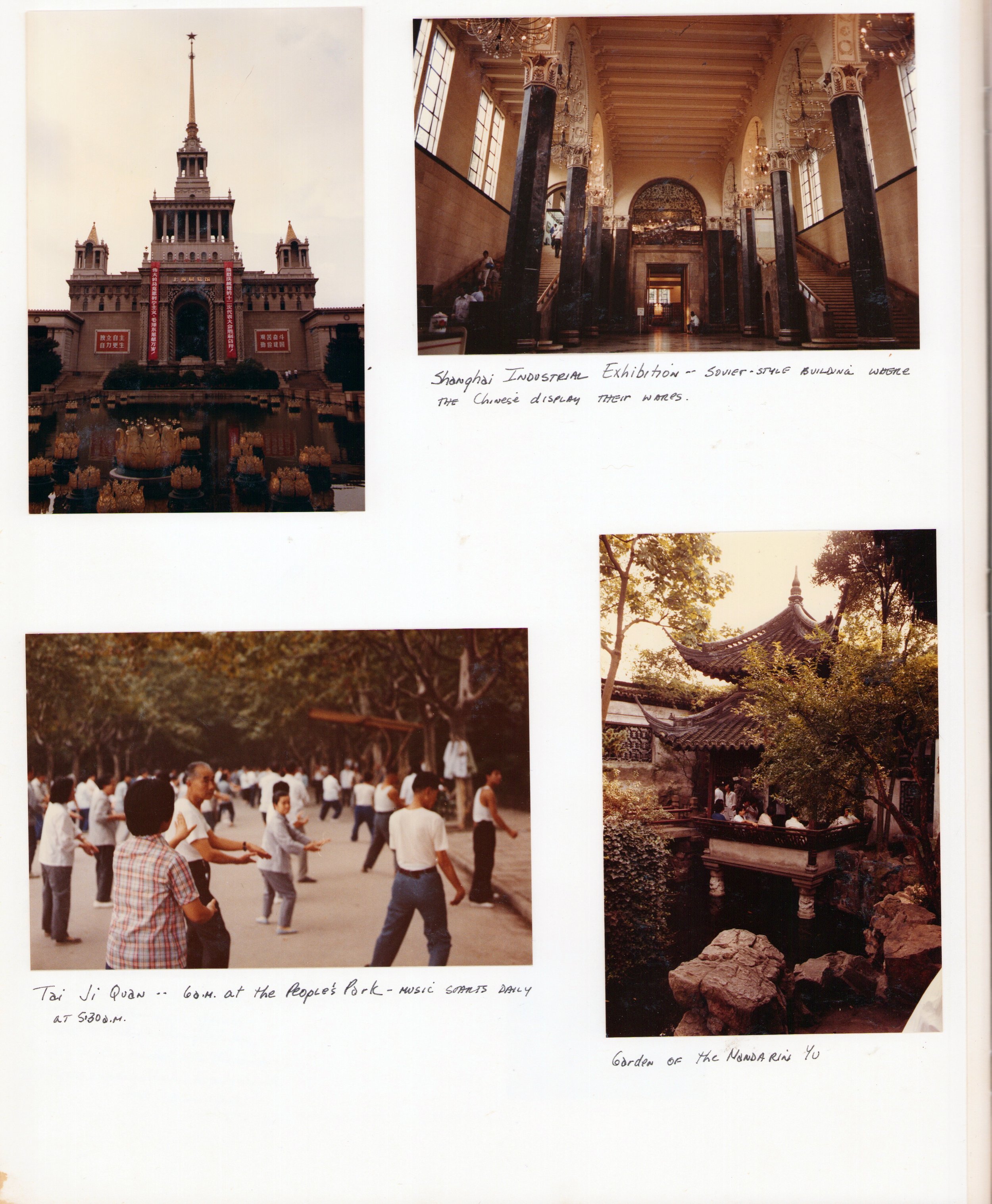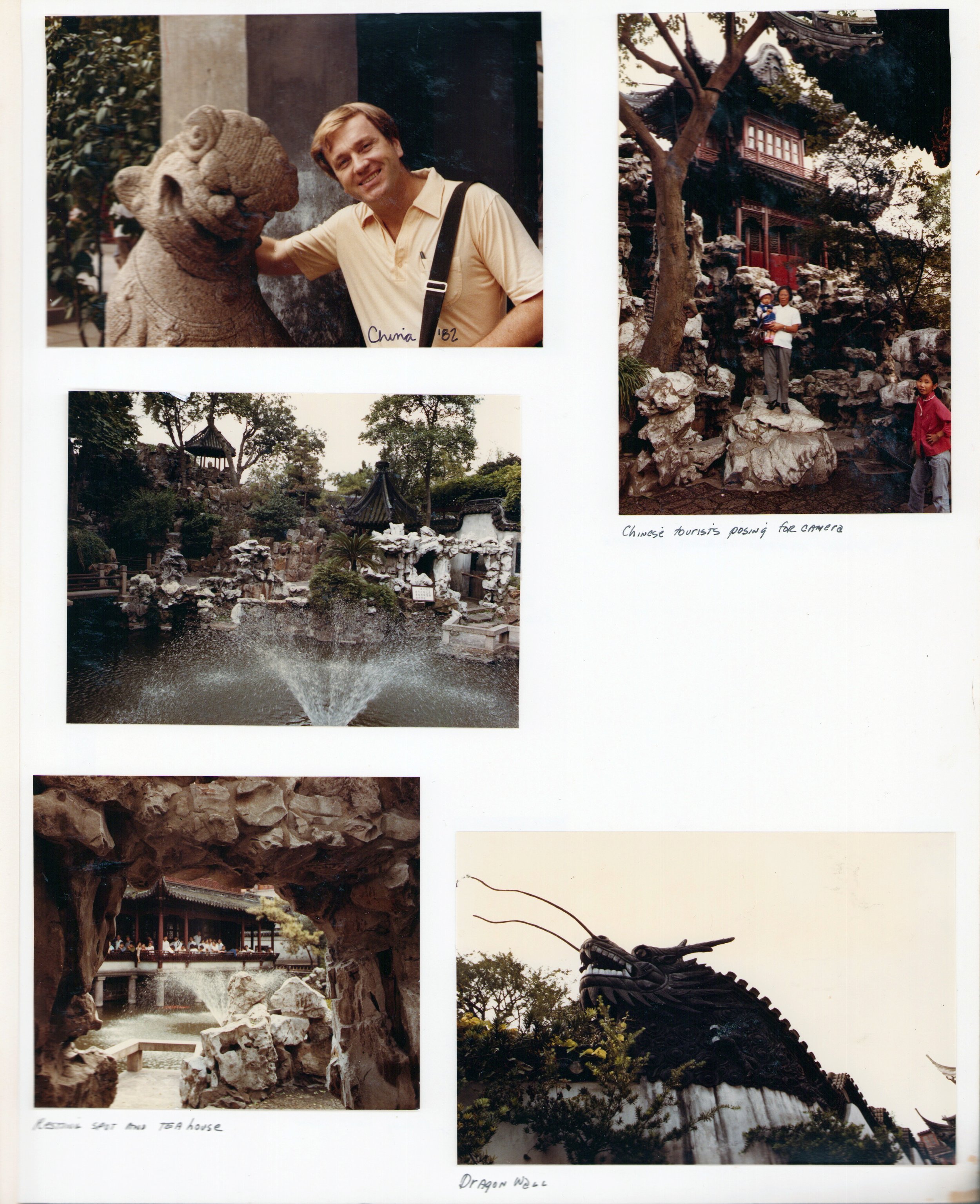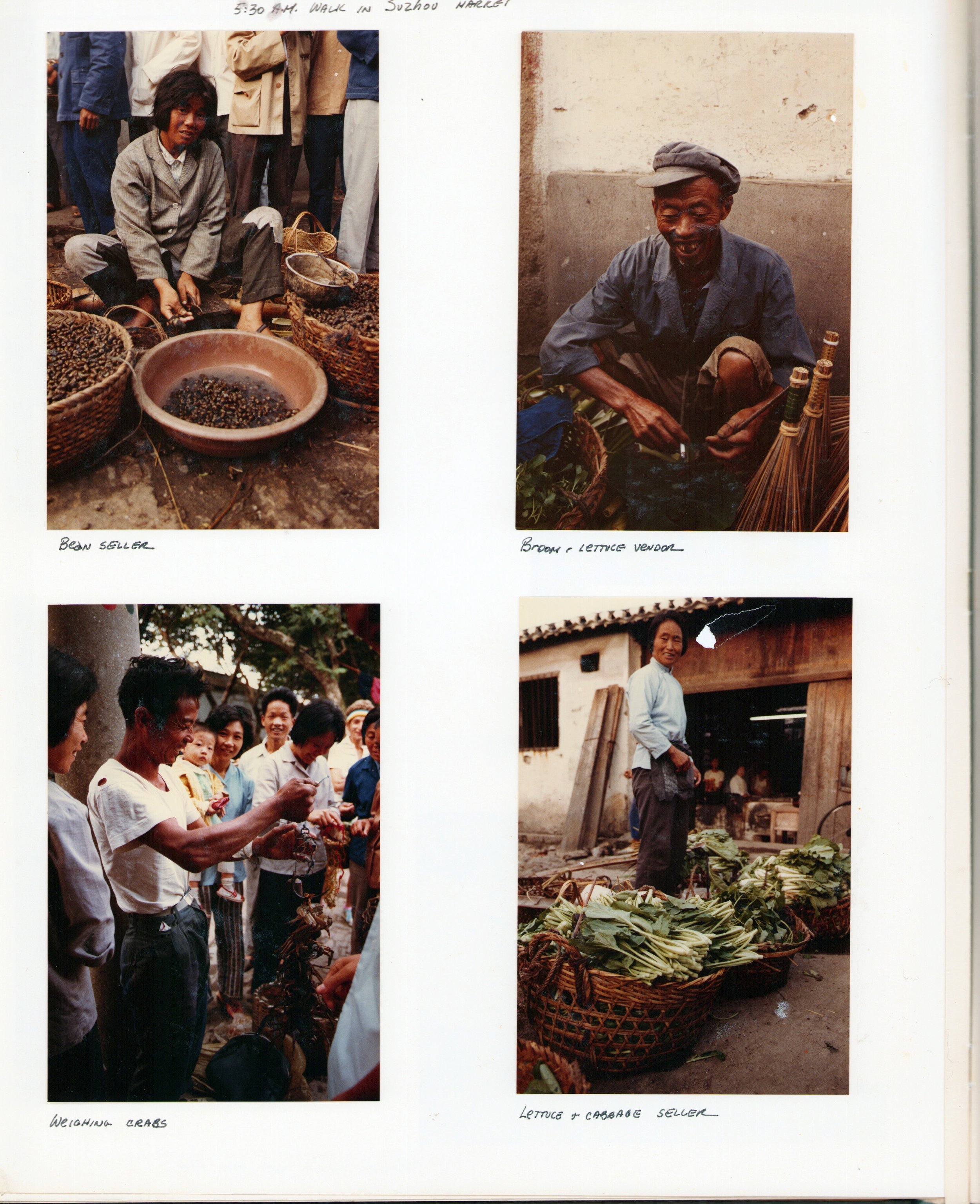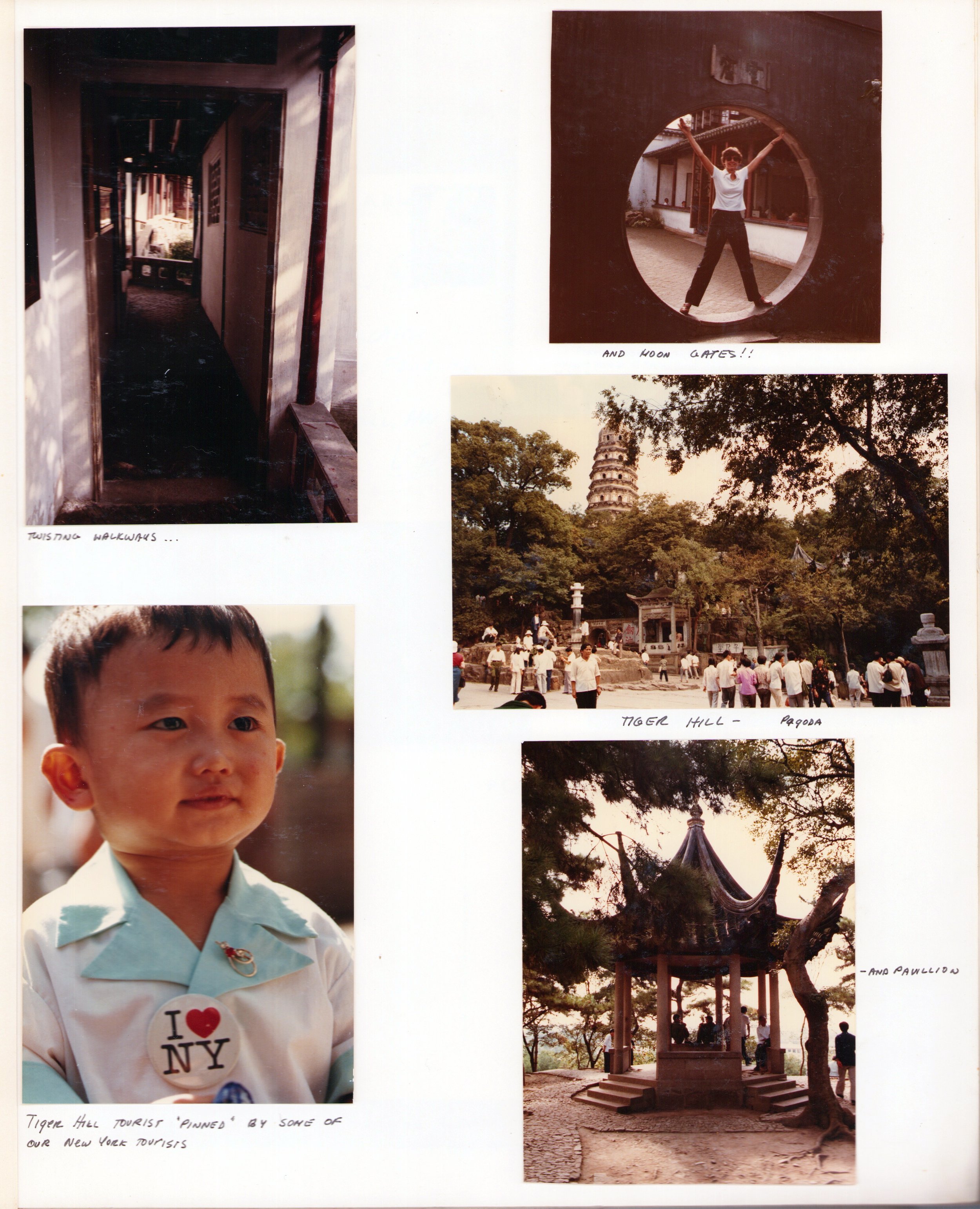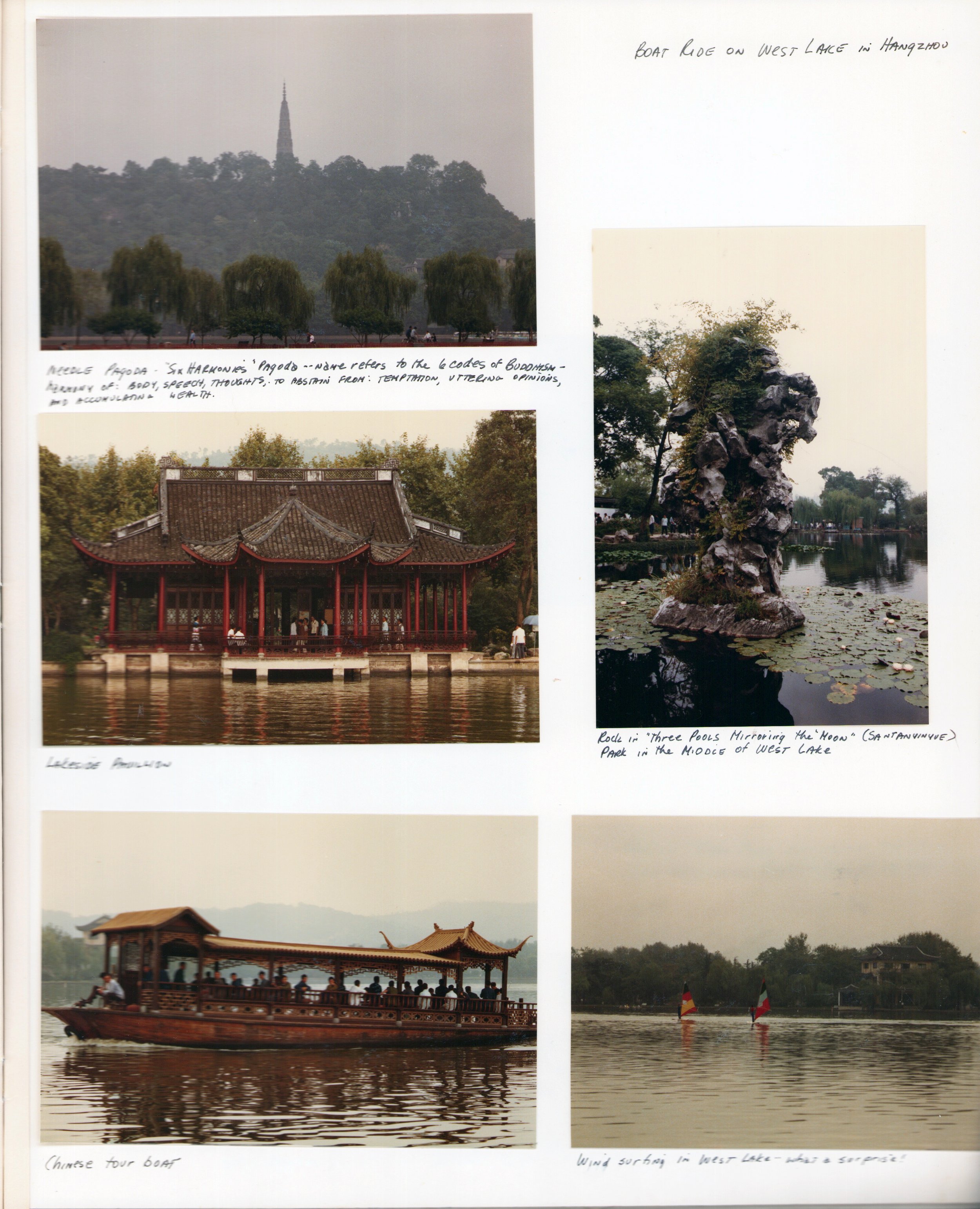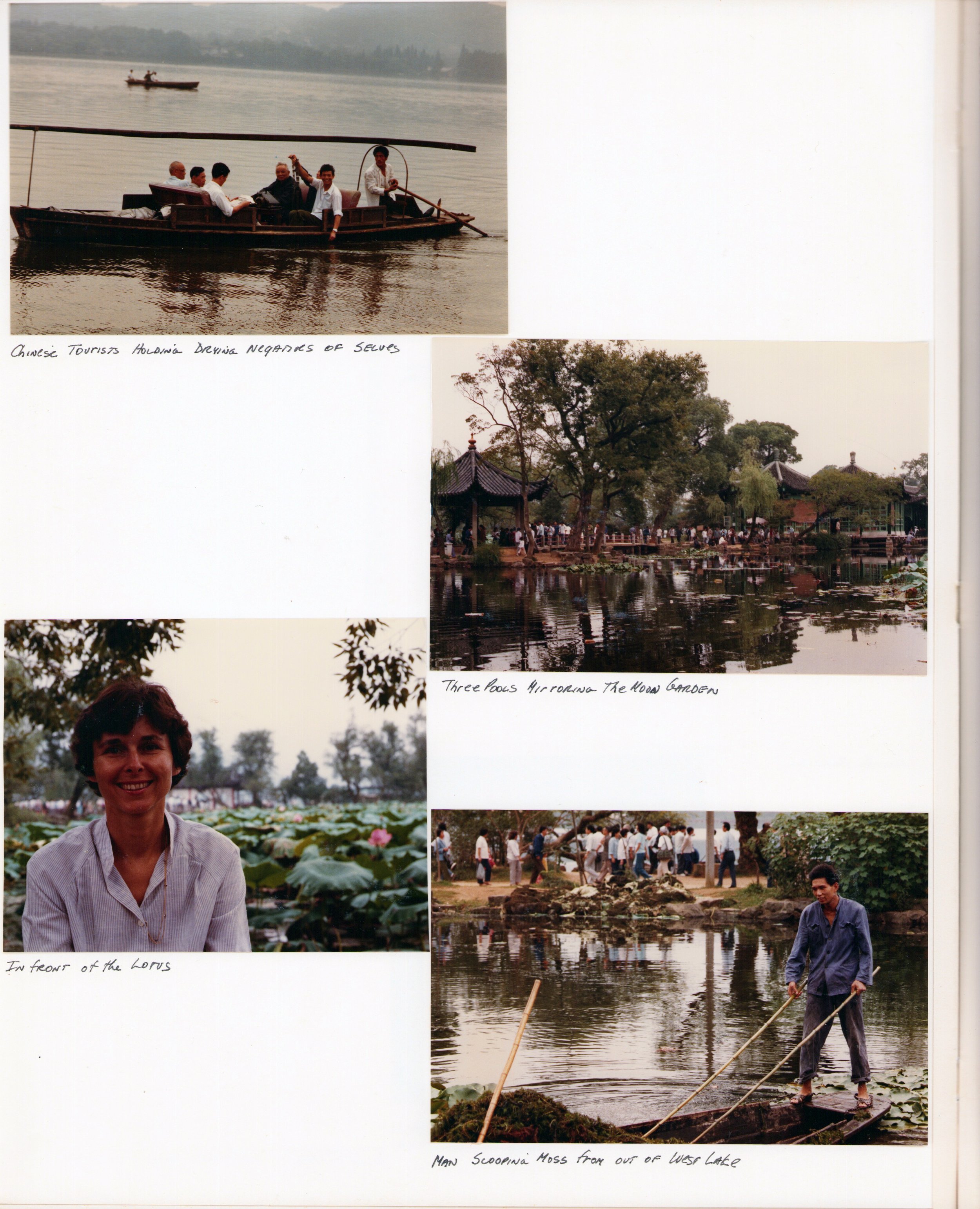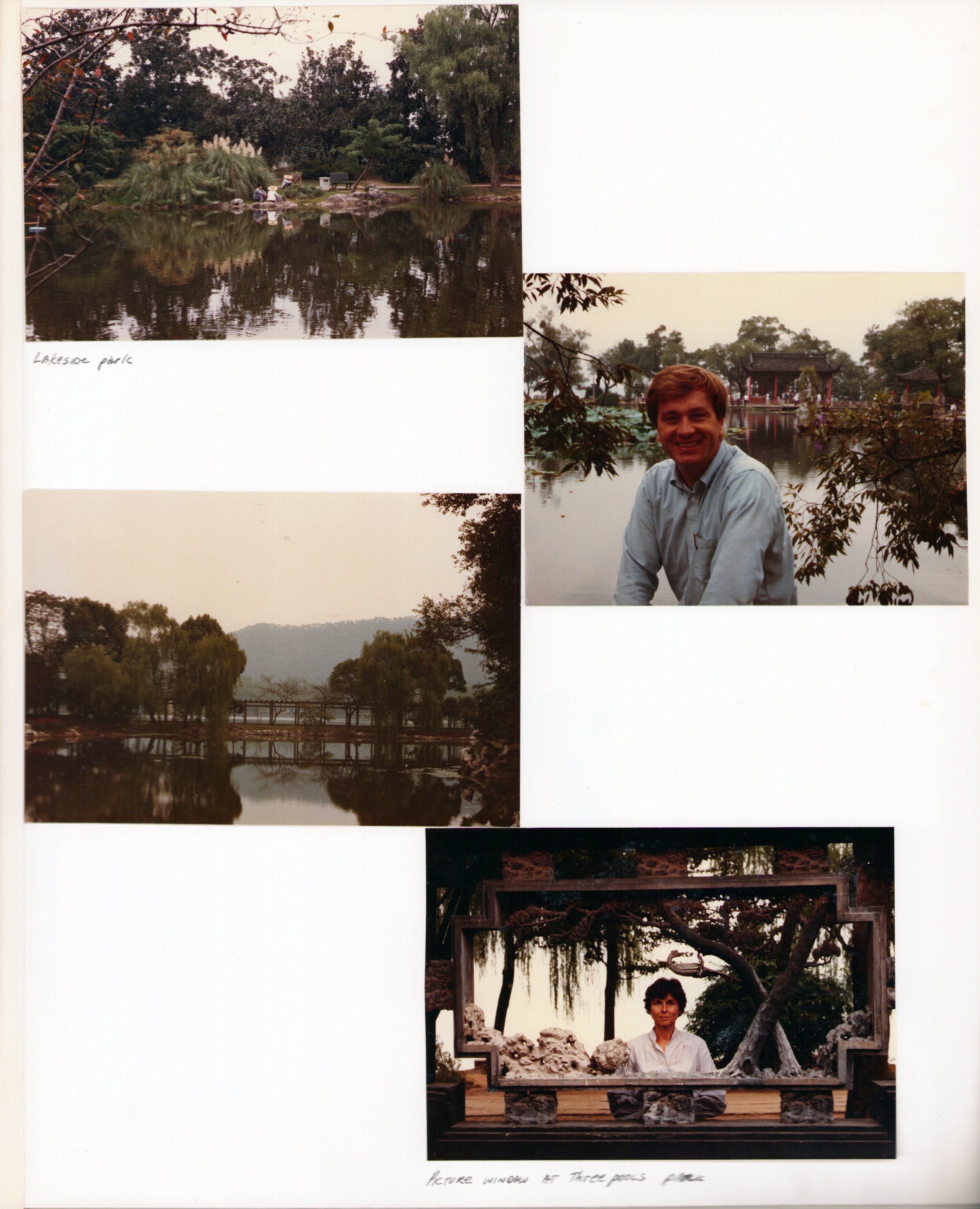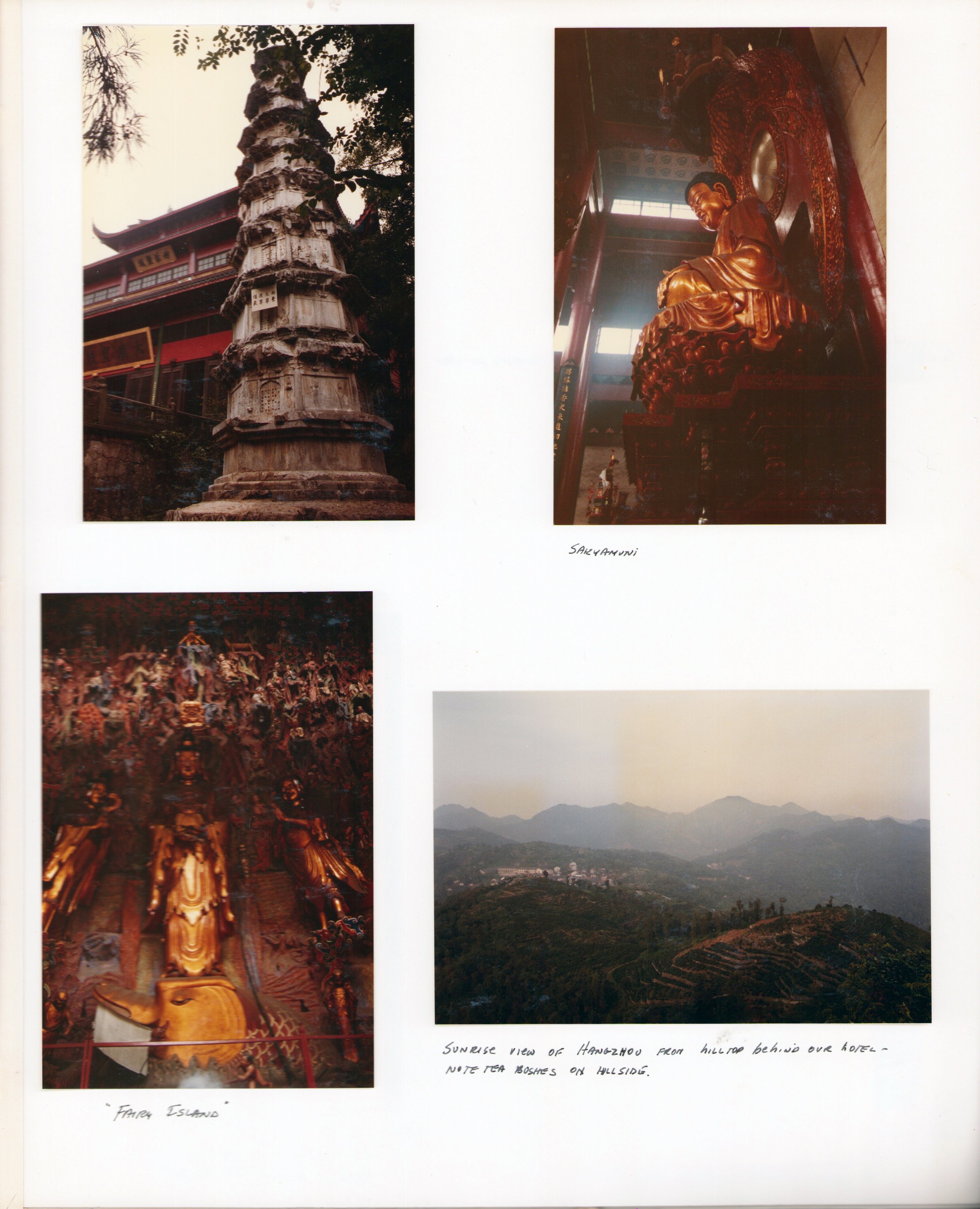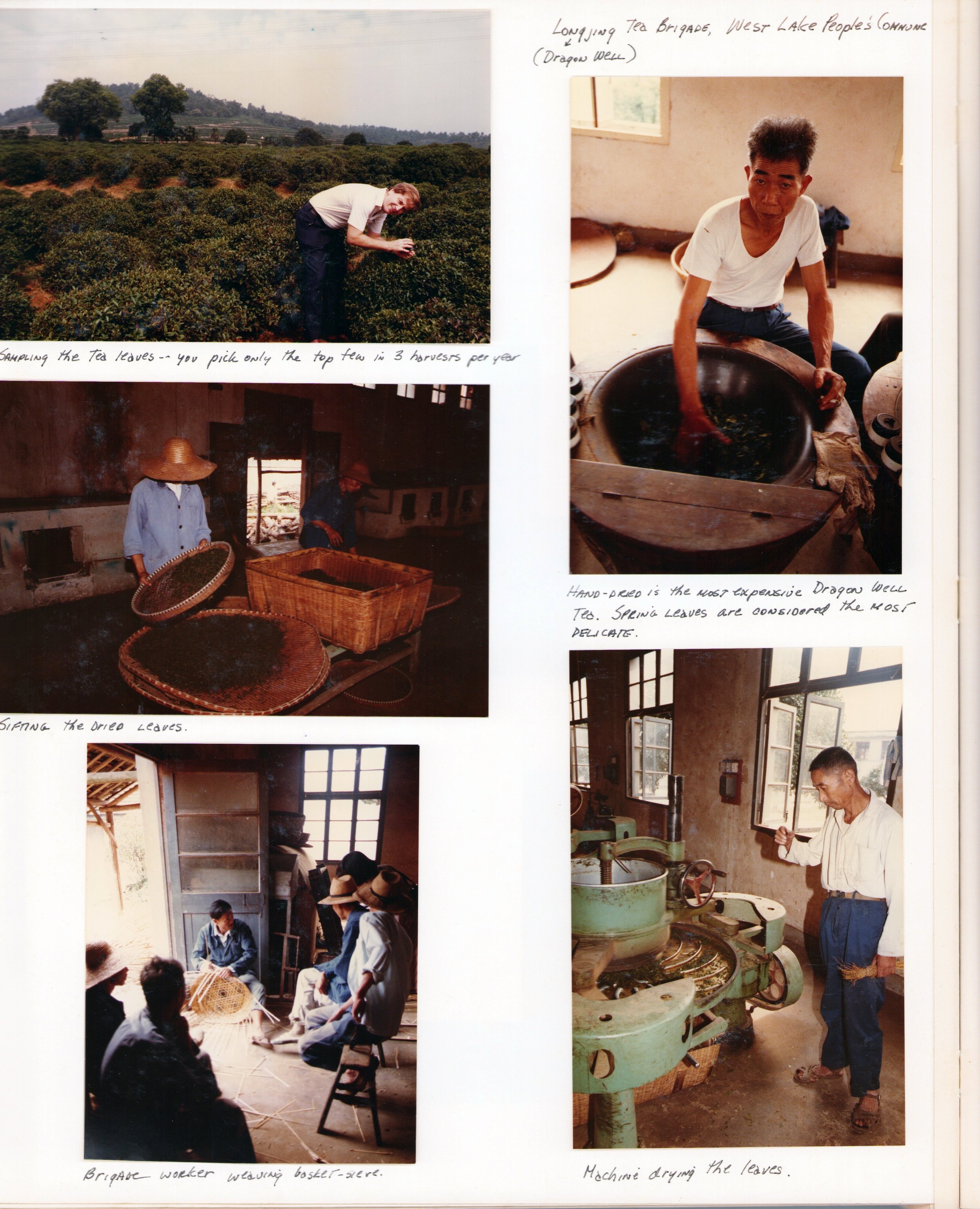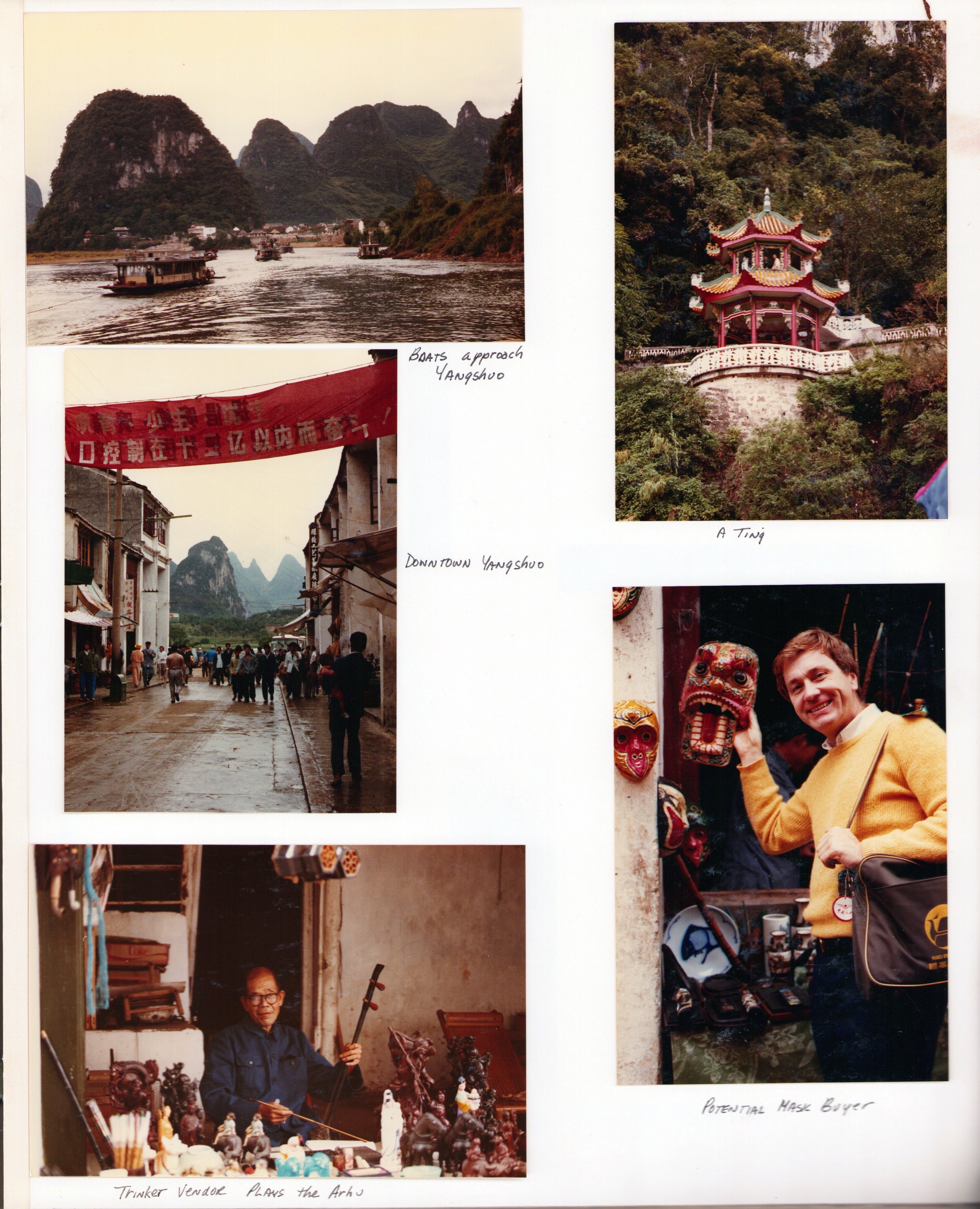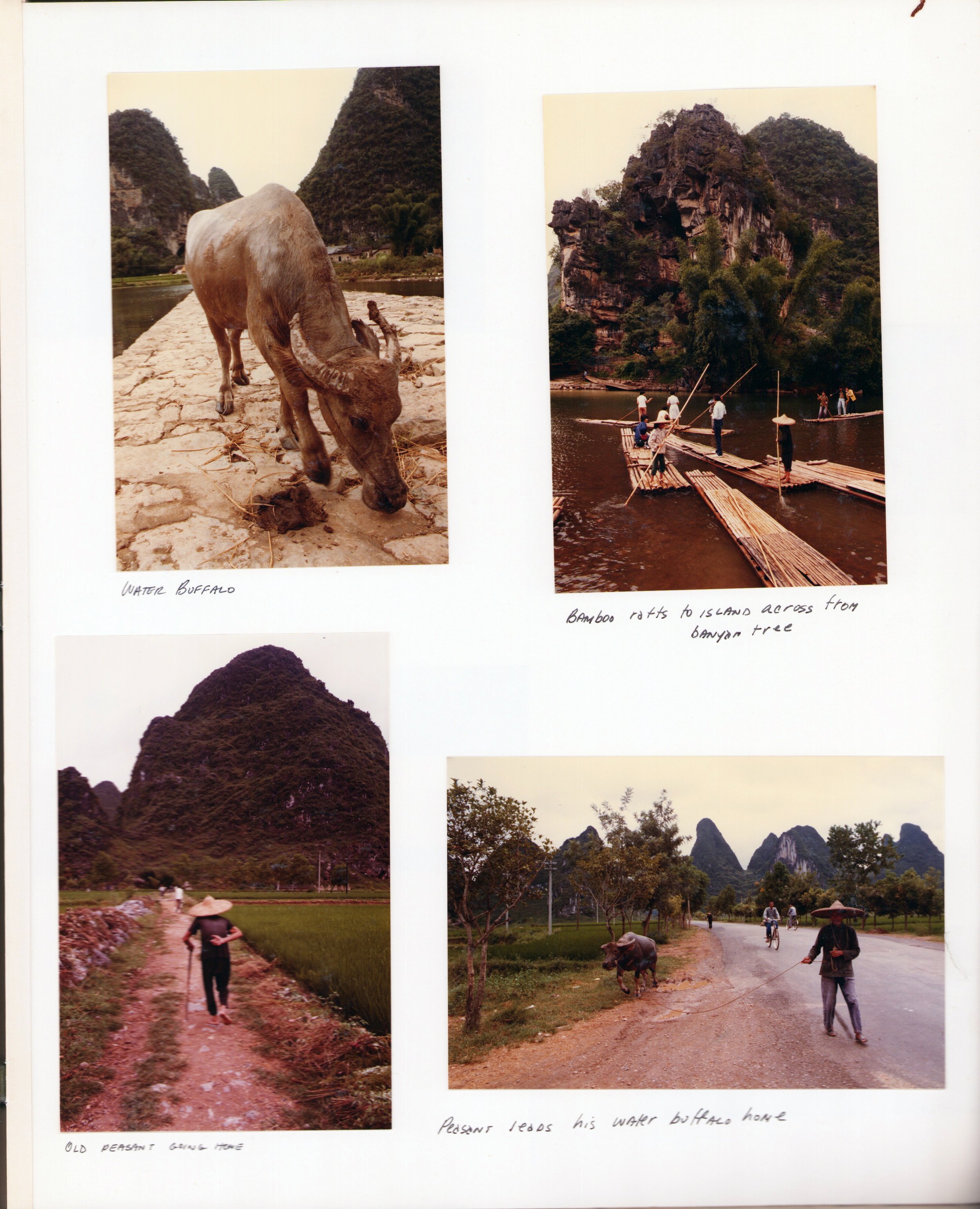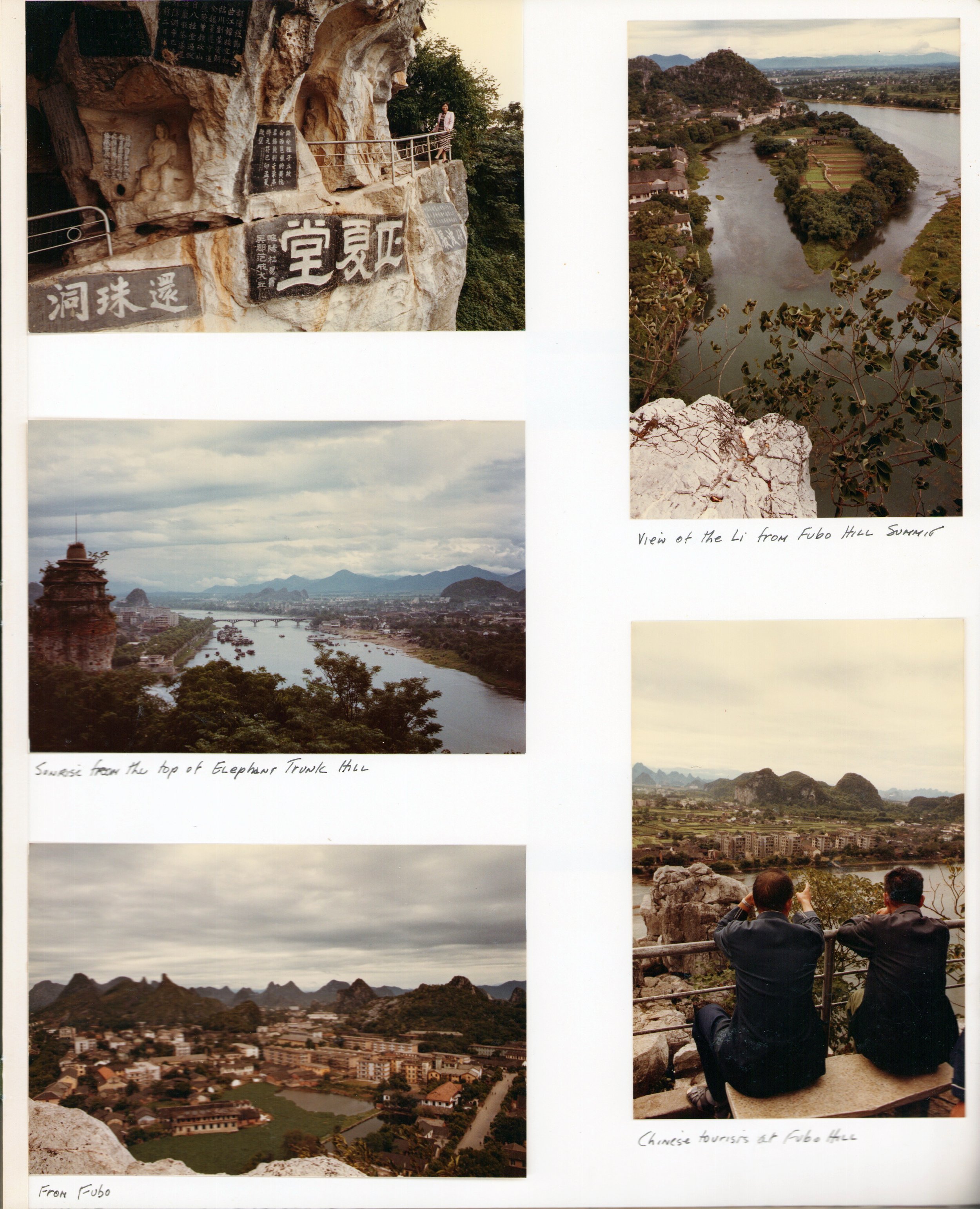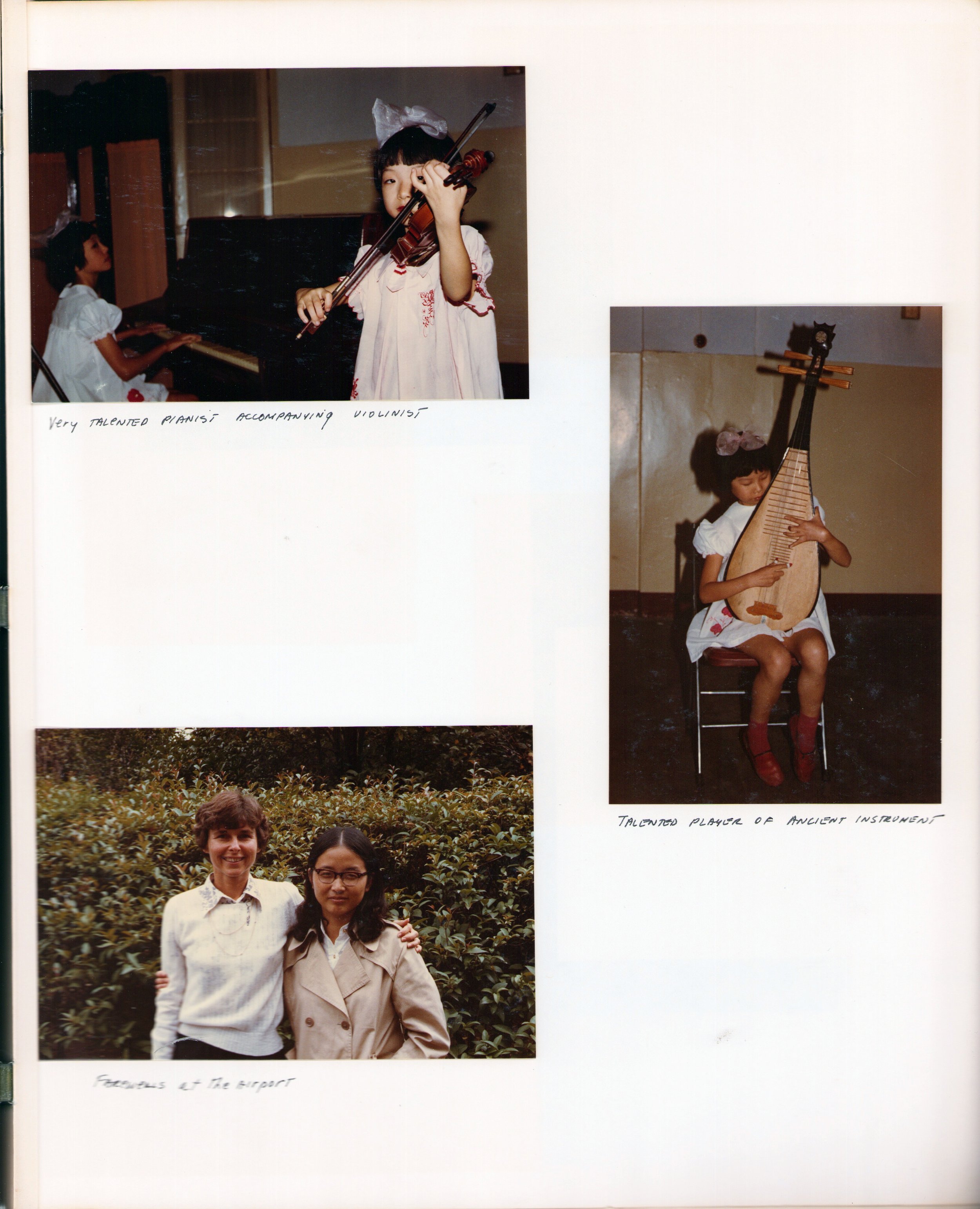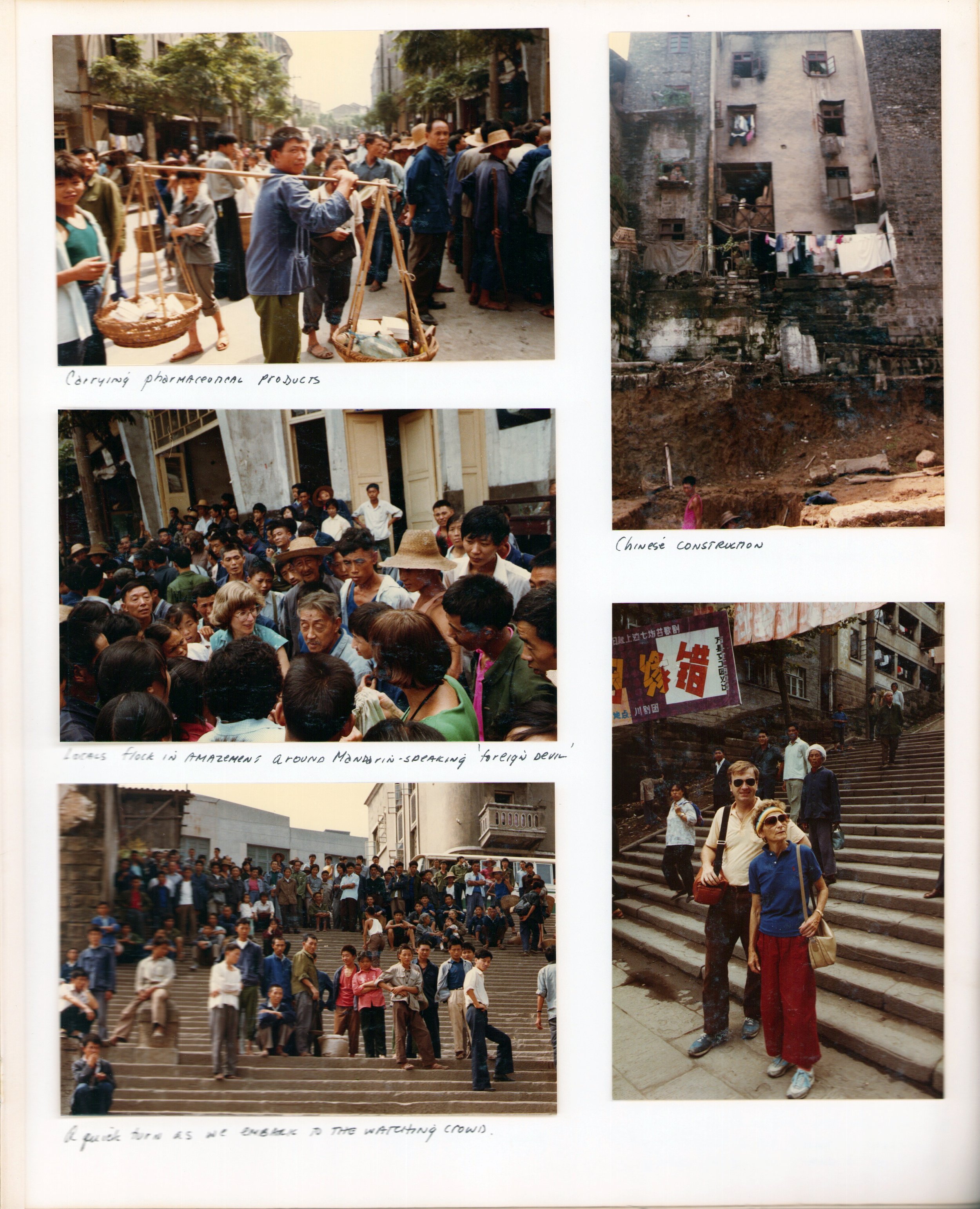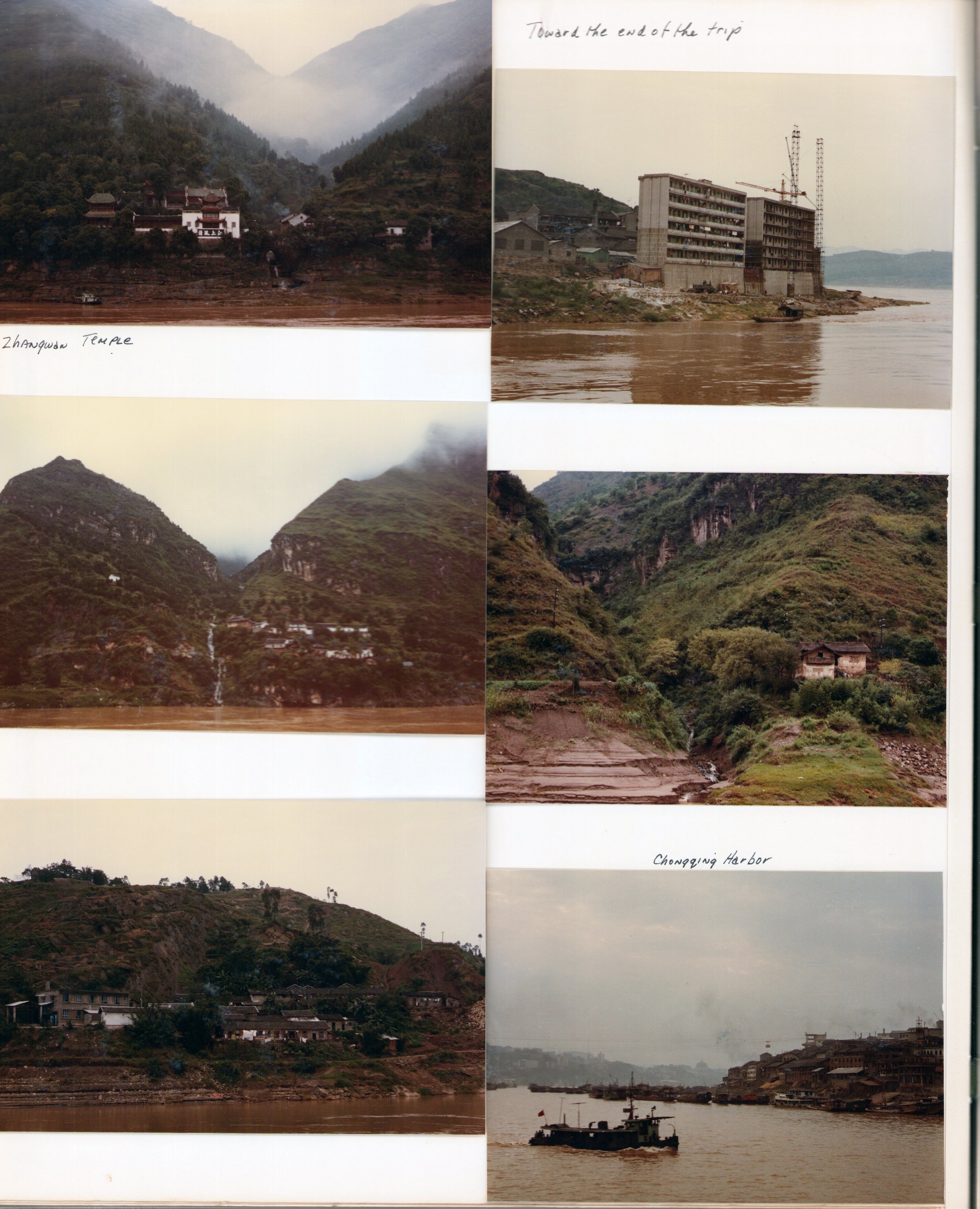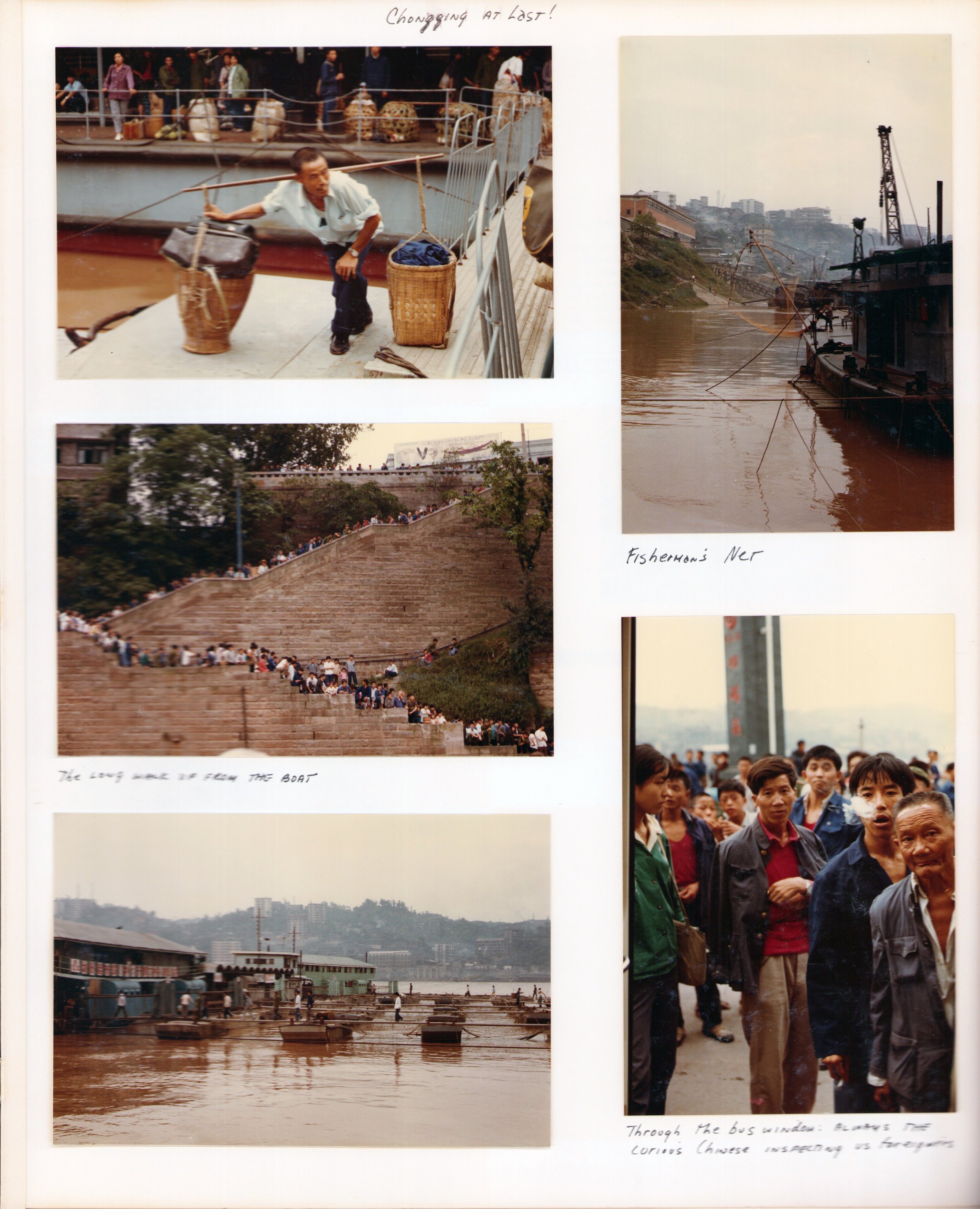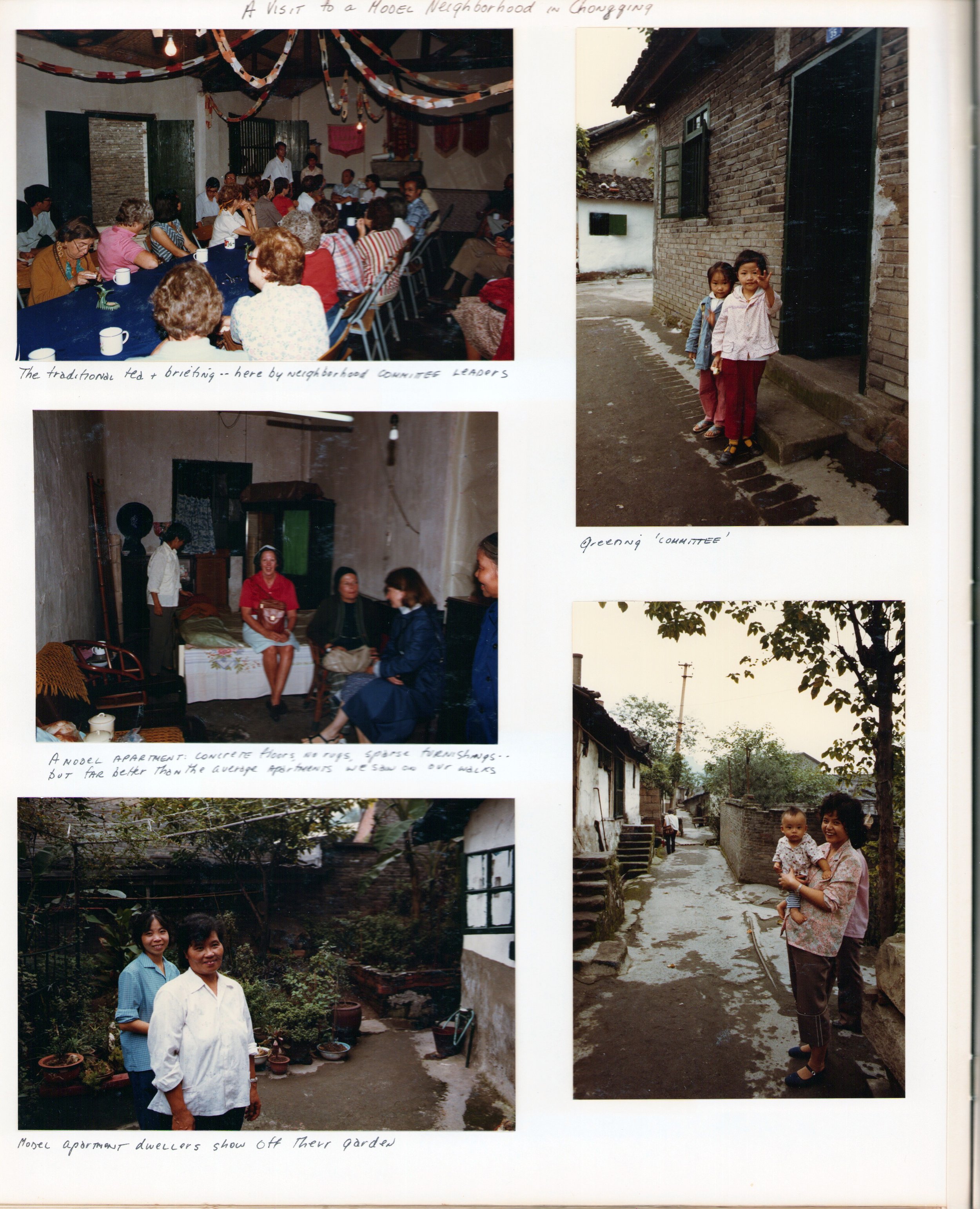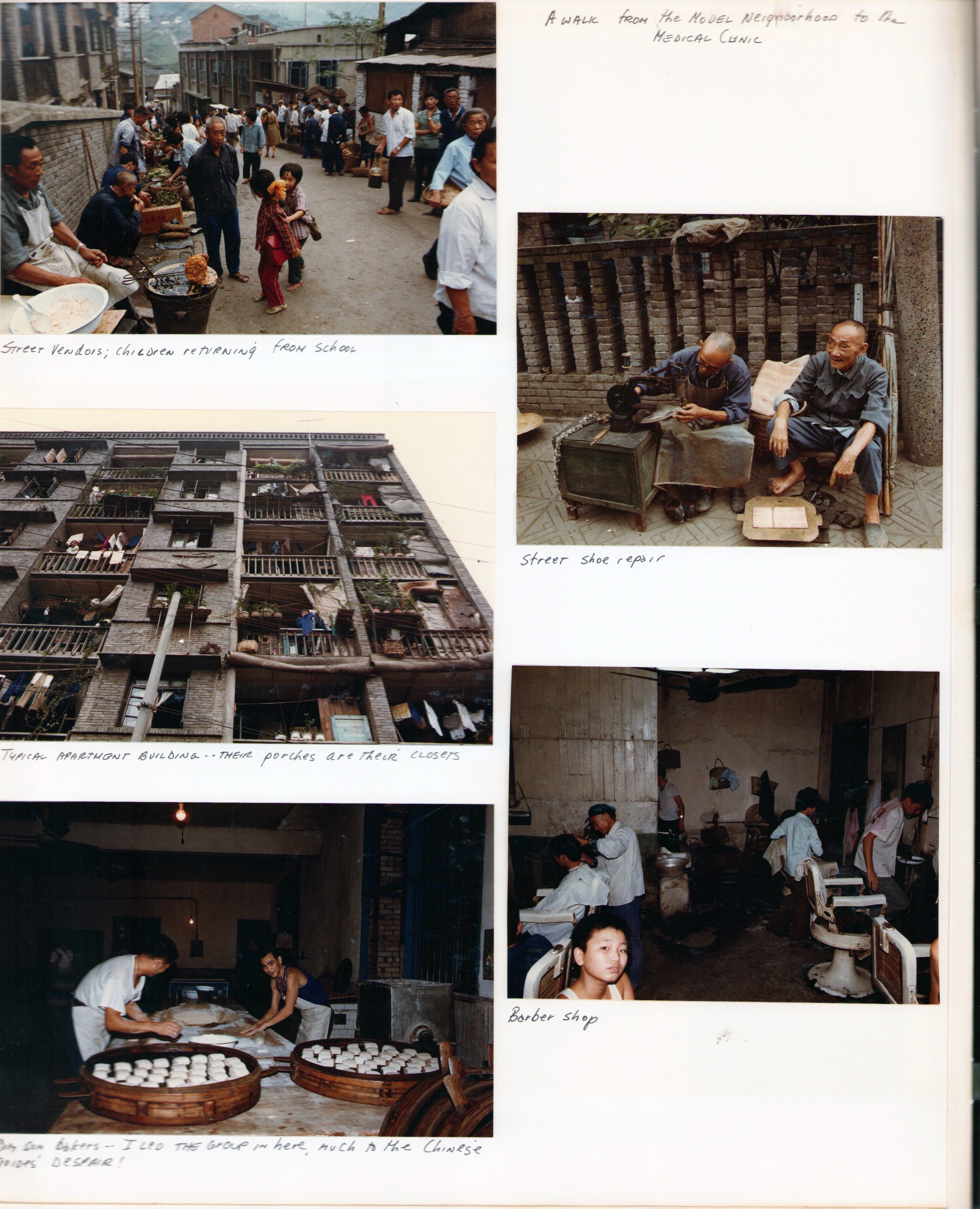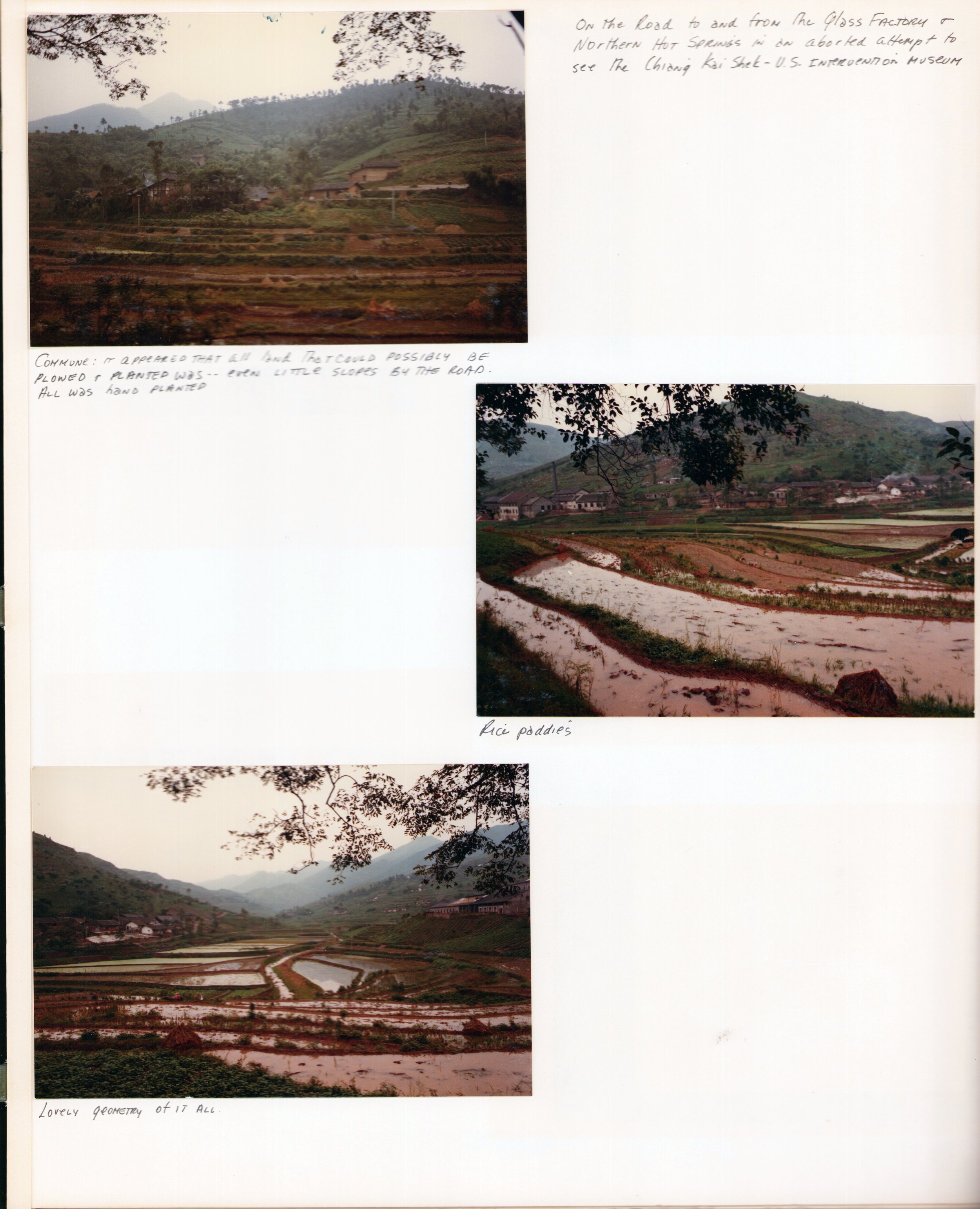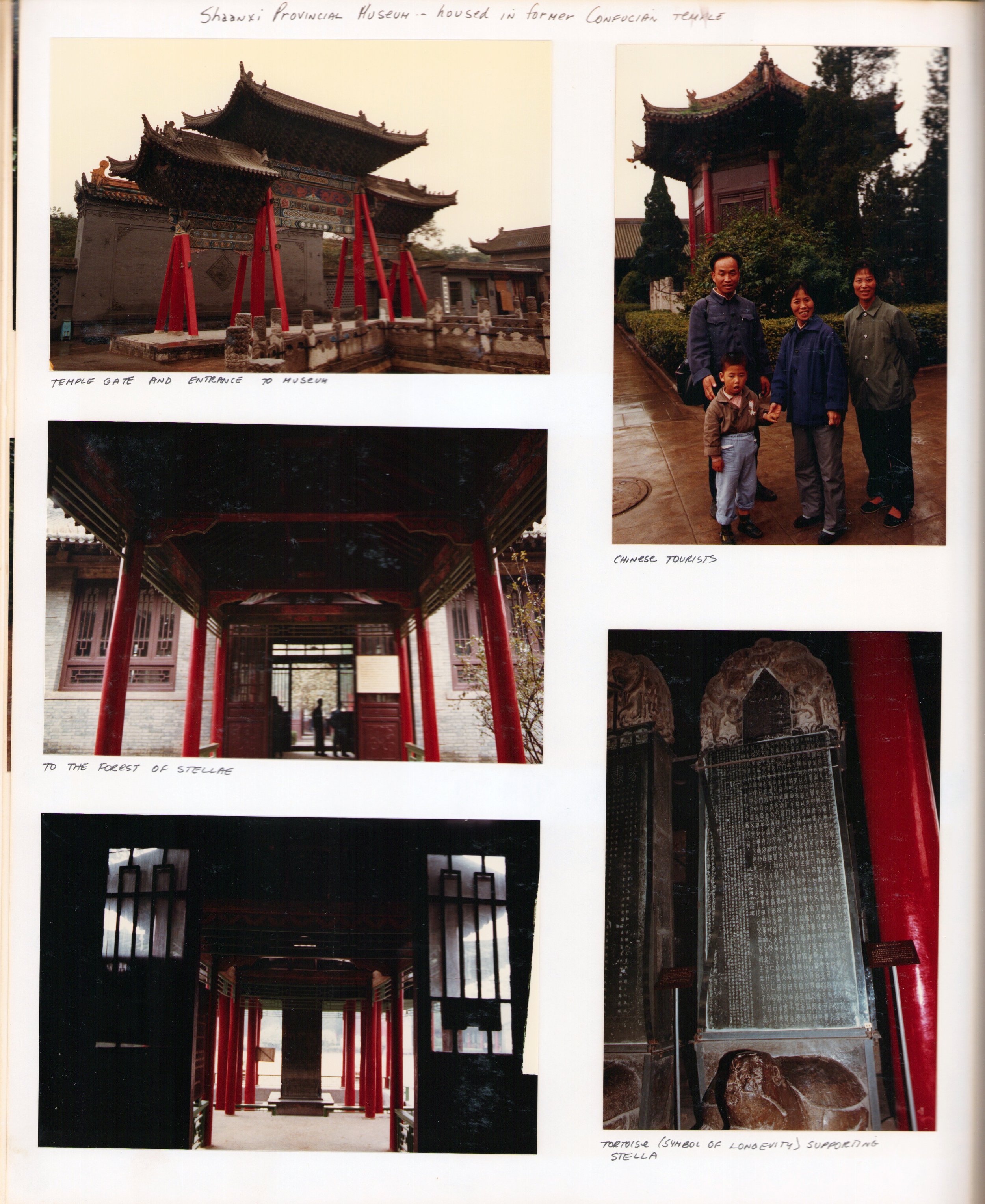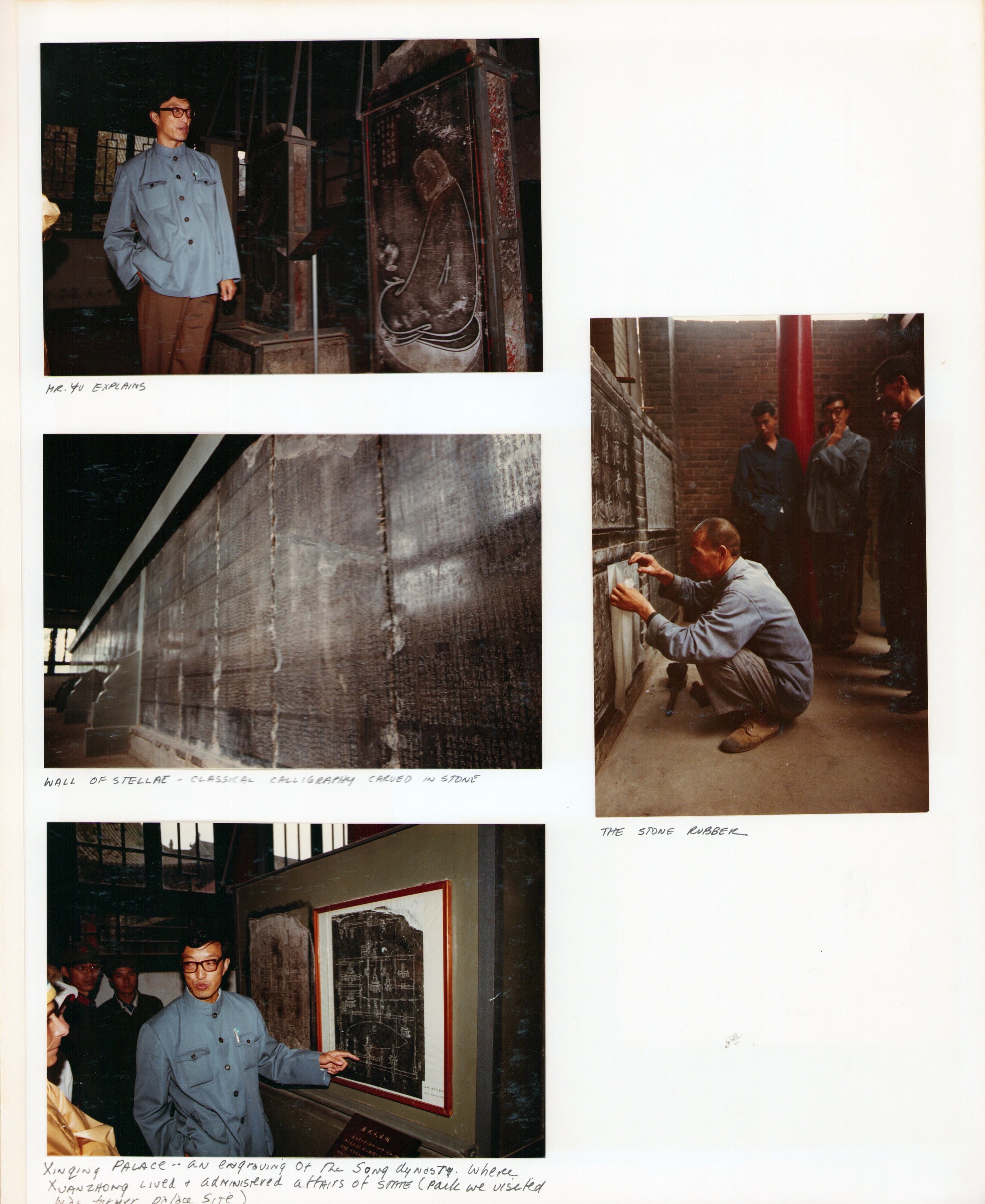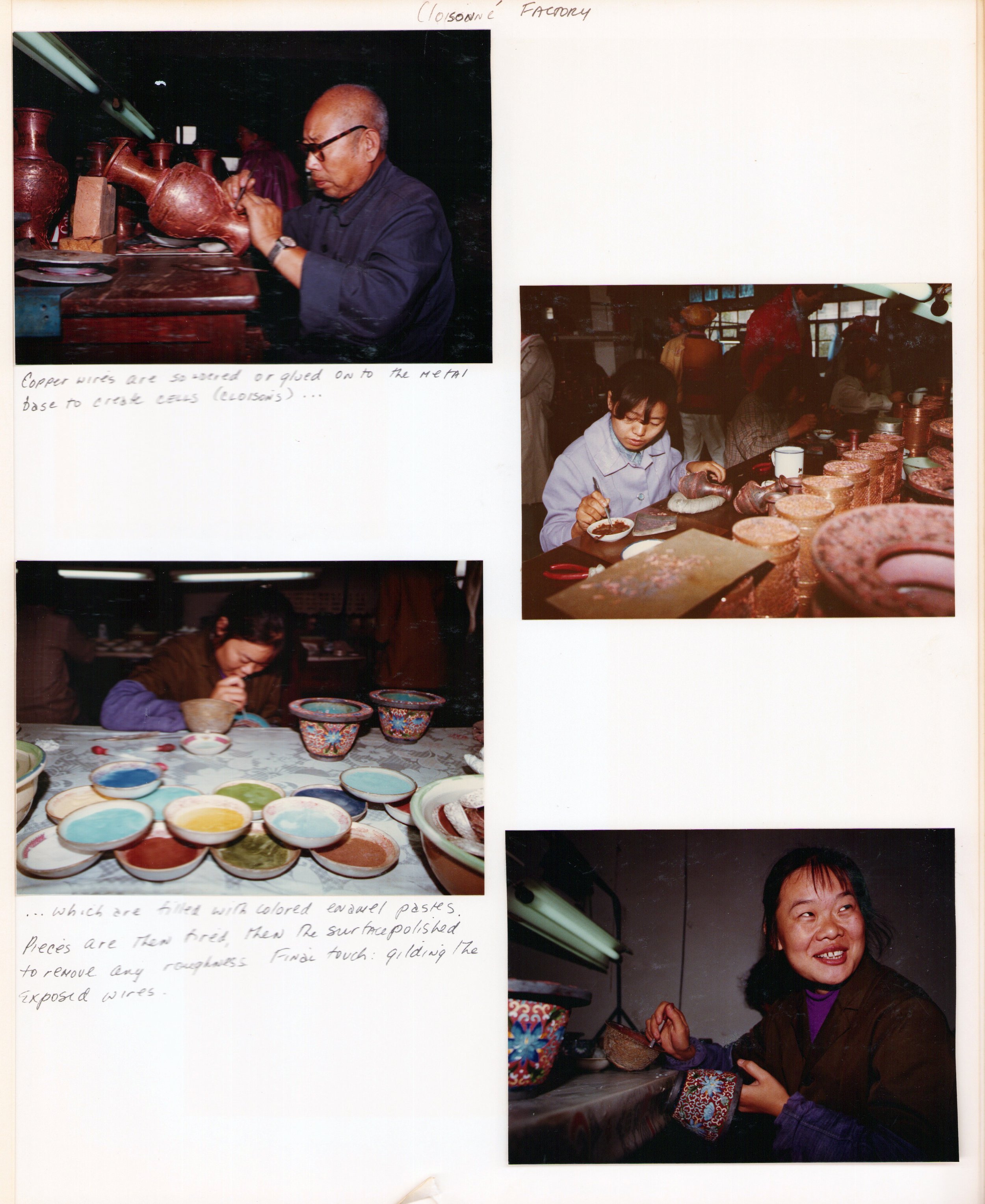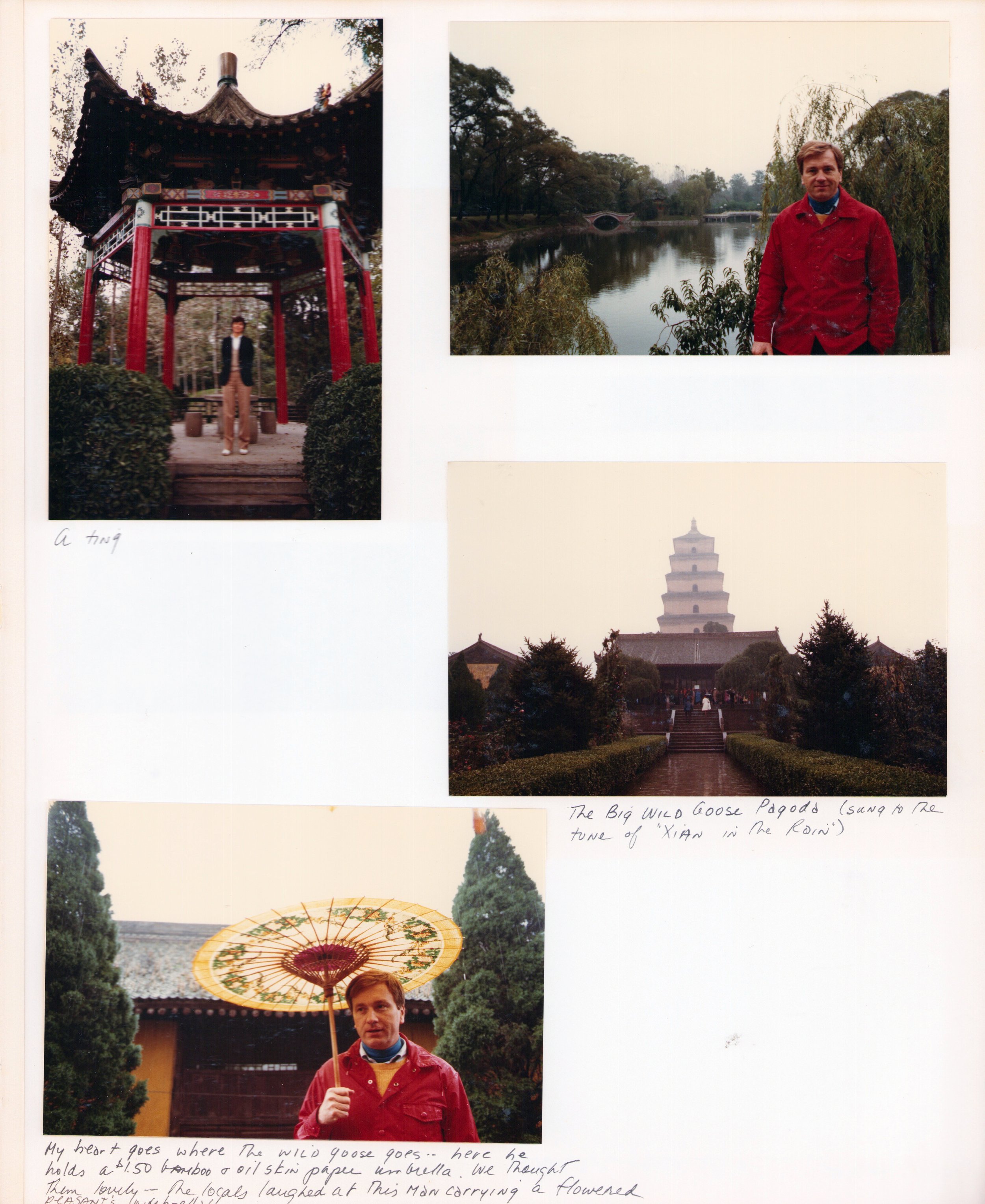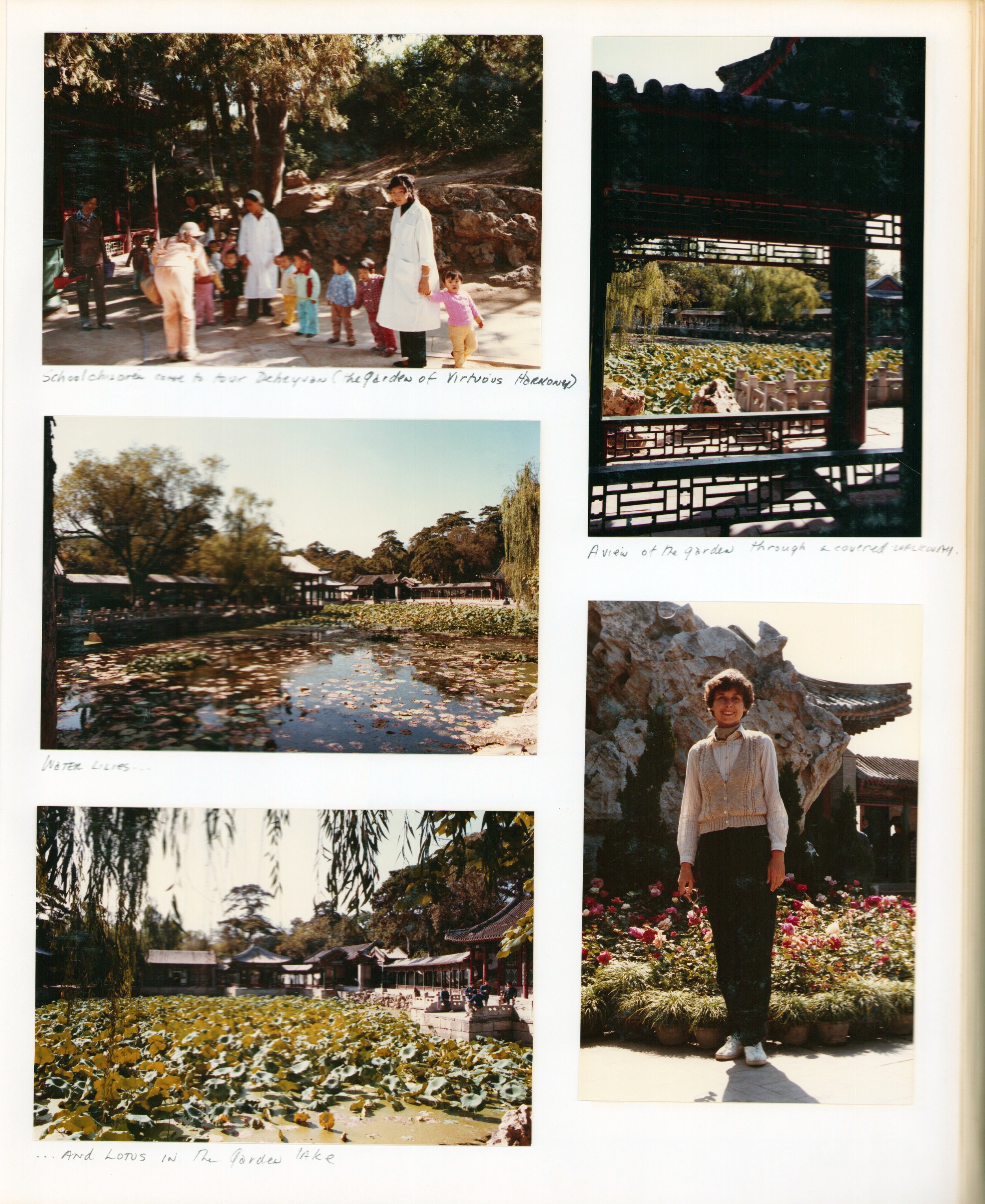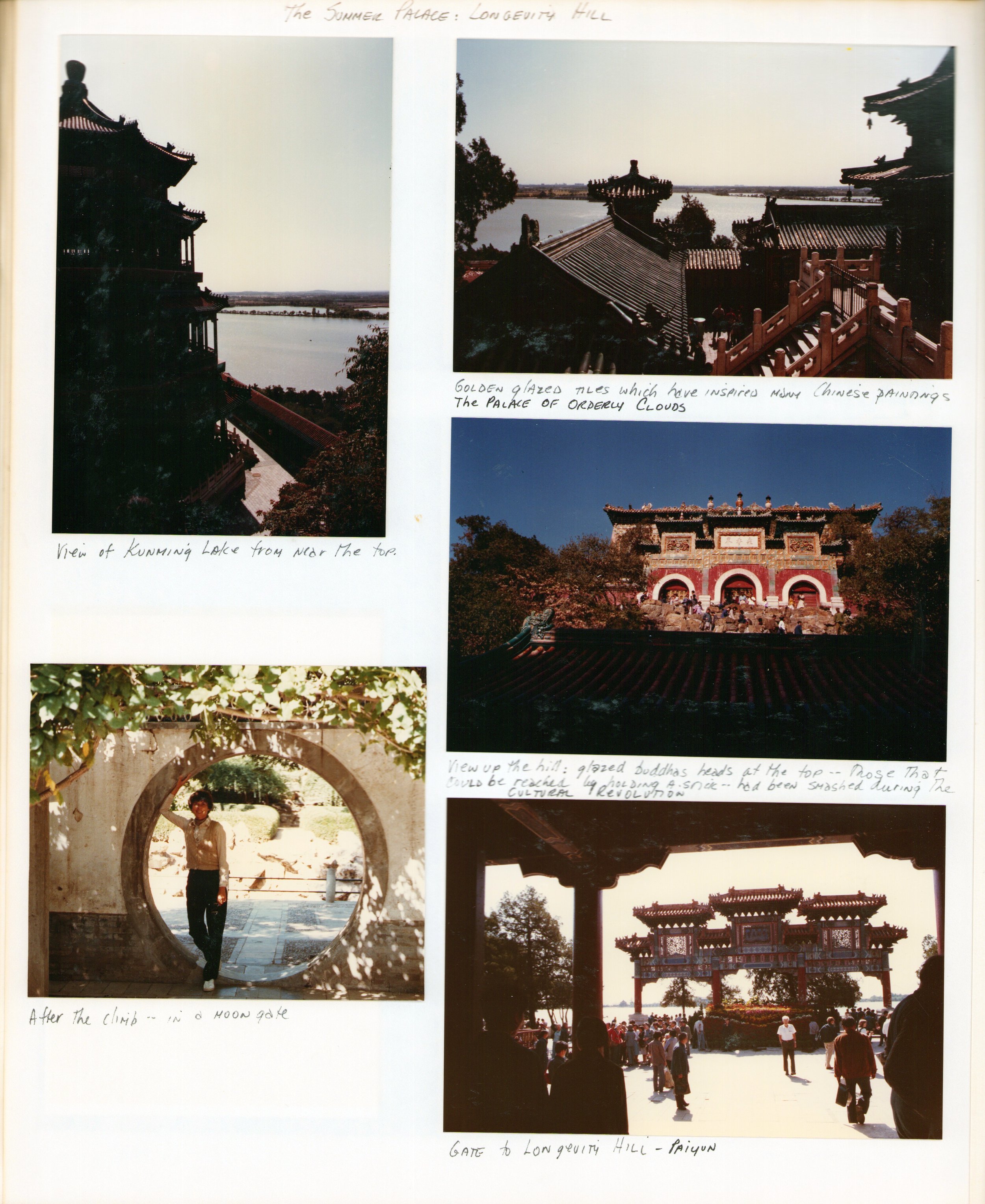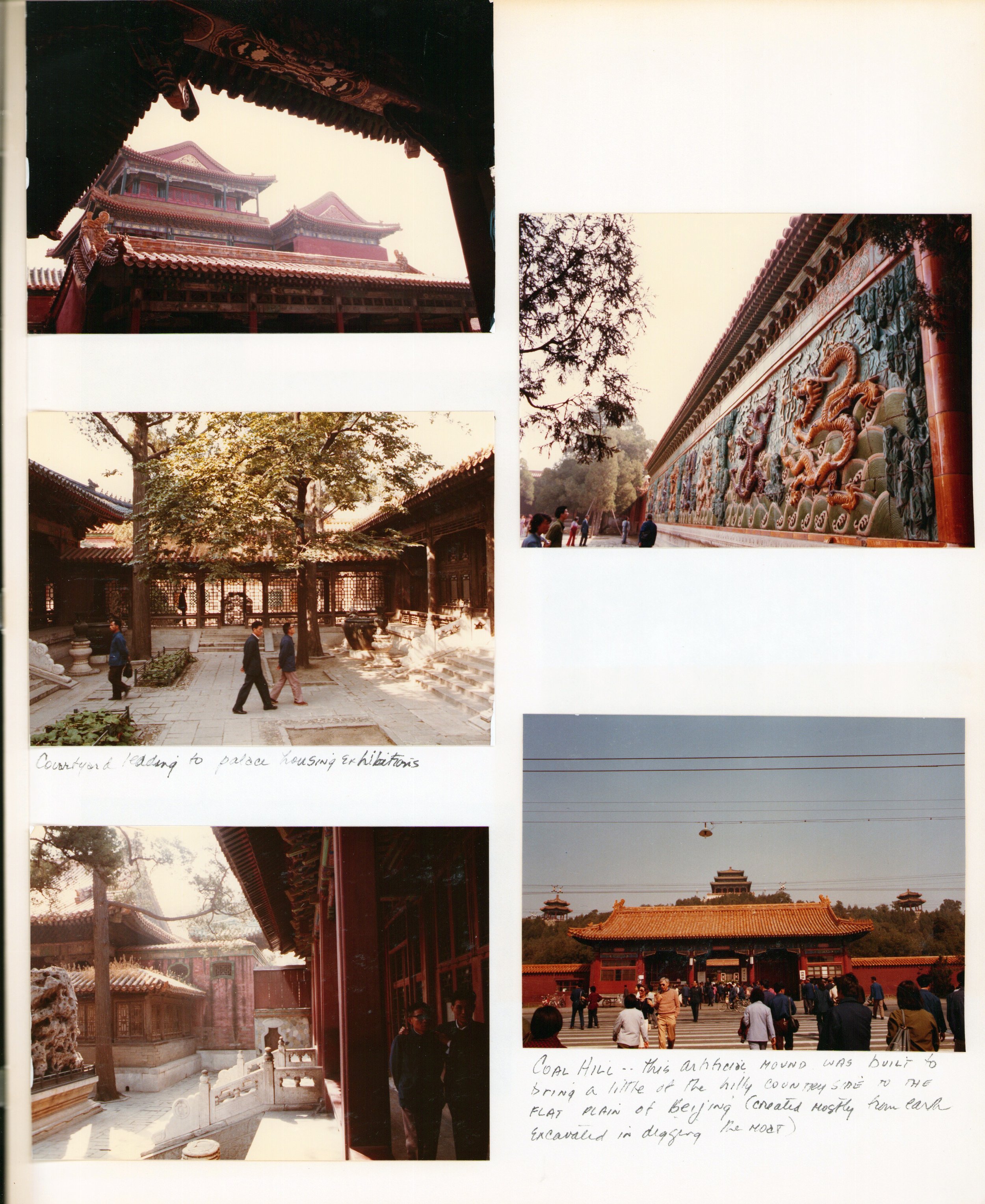China, September 7-30, 1982
In 1970 Jack and I had traveled to the Soviet Union and Lithuania for a month with a Columbia University group (recommended by my Barnard College advisor, Peter Juviler). Although the group was large, the participants were interesting and varied. Since LLH had taken 8-credit “Oriental Civilization”, a life-changing course, seeding the desire to go to China, Japan and India. Somehow we learned about this Columbia-professor-led trip to China, newly opened to Americans, and gladly signed up.
We fly to Shanghai, a pleasant colonial-looking city (no skyscrapers) but sporting the air polution that blankets the country; much of the pollution emanates from coal fires used to heat and cook. We visit the Soviet-style Industrial Exhibition Hall, see Tai-chi (here and in every park throughout China), and visit the Garden of the Mandarin Yu.
Gardens and dragon wall.
We start the circuit of handicraft factories...
Rug weaving...
Ride to Suzhou on a well-appointed train. Bikers crowd the streets. Suzhou, lined by canals, is nicknamed "Venice of the East."
Suzhou Grand Canal at Sunset; girl shows off watch; mother shows off her son.
Sights on our 5:30AM walk through the Suzhou markets.
More market scenes; older women were aghast at Eva's tennis dress exposing bare legs. Woman gave us free fresh biscuits because all we could proffer was $10 worth of tourist currency.
More Suzhou scenes, including scandalous foreign devils. Embroidery institute.
One artisan is copying a painting in silk threaded embroidery. Apprentices must be 16.
Suzhou is famous for Scholar Gardens, the retirement homes of the Mandarins (educated government officials). Unesco: Classical Chinese garden design, which seeks to recreate natural landscapes in miniature, is nowhere better illustrated than in the nine gardens in the historic city of Suzhou. They are generally acknowledged to be masterpieces of the genre. Dating from the 11th-19th century, the gardens reflect the profound metaphysical importance of natural beauty in Chinese culture in their meticulous design.
LLH in a moongate. Tiger Hill Pagoda and Pavilion in Suzhou.
Hangzhou, the capital of China’s Zhejiang province, is the southern terminus of the ancient Grand Canal waterway, which originates in Beijing. Its West Lake, celebrated by poets and artists since the 9th century, encompasses islands (reachable by boat), temples, pavilions, gardens and arched bridges. On its south bank is 5-story Leifeng Pagoda, a modern reconstruction of a structure built in 975 A.D.
Our group takes a boat ride on Hangzhou's West Lake, a good way to enjoy the pagoda, pavillions and gardens--plus wind surfers!
We enjoy watching the Chinese tourists, pavilions and worker raking the lake of weeds. LLH in front of lotus-filled pond; many of the soups we eat throughout the trip feature lotus roots (good but enough was enough!).
More views around the lake; LLH framed by a carved window framed.
Lingyin Temple, or "Soul's Retreat Temple", is the most important temple in South China, and is regarded as one of the 10 famous Buddhist temples in China.
More aspects of the temple grounds. View of the tea-bush filled hills behind hotel.
We visit the Hangzhou commune that picks and dries (green) or ferments (black) the top tea leaves on the bushes 3x a year. It is humid and hot on the hills, increasing our appreciation for the Dragonwell (green) tea they produce.
A silk looming, dying and weaving factory.
The complexities of silk fabric production.
Cruise on the Li River where we view those fabulous and iconic karst mountains.
Stunning views look just like the paintings.
Rafts and junk boats on the Li River.
The boat stops at Yangshuo where we visit the market.
1300-year-old banyan tree near Yangshuo. Eva gives local kids candy. Our genial and hardworking guides, Mr. Tang and Mr. Yu, buy persimmons.
Water buffalo, banyonan rafts and peasants.
Our train to Wuhan has an accident (before we board) so while waiting for our military transport plane, we get to tour Fubo Hill. Fubo Hill (a karst mountain) has a Tang Dynasty (618–907 AD) temple.
Dramatic views around and from Fubo Hill.
Elephant Trunk Hill
We fly our military transport plane to Wuhan--lace tablecloths and all.
Miss Han, our 23-year-old Wuhan guide. She had recently married but could only meet with her husband (who lived in a different city) on vacations. She hoped that within 2-3 years they could be together. We visit silk painting factory, stencil cutters and Buddhist temple with moon gate.
Guiyan Temple: the southern courtyard holds 500 statues of Lohan (also known as Arhats), or Buddhist disciples that have achieved enlightenment.
We visit a school where young kids sing a "Hello" song and 14-year-olds read well in English. Swan dance...
Talented musicians.
Yichang: we spend the afternoon here before boarding our 3rd class cabins (no First Class since that's Capitalist!) for our Yangtze cruise. Jack gives a tour of this "low head" dam about which he's read engineering articles (but of course!).
We travel upstream from Yichang to Chongqing, through the dramatic 3 gorges.
Building the Three Gorges dam (after our trip but in planning for years) displaced almost 2 million people living in more than 1,500 cities, towns, and villages along the river. Also destroyed was some magnificent scenery and countless rare architectural and archaeological sites.
Sights along the Yangtze...factories appear to be unoccupied (lower right).
After going through the first gorge we visit this town. Everything is the color of the mountains...
We see but a few boats on our journey up the river.
Wanxian: port on the Yangtze where we stop for a walk.
Busy port with many, many people going about their business...amazed at the Mandarin-speaking foreigners (our Columbia guides)
Loading fertilizer onto a boat; dear Mr Tang our guide; Jack with botanist from Nanjing (who disappeared the next day, we thought because he talked to much to us); siblings--I traded my looking through her play binoculars with letting her use my camera!
Twins with missing teeth; rooster--a common sight on the boat (along with some pigs); two dunces--Steve McAllister and Jack think we've been robbed--NOT; Second class lounge and river marker.
Drab sights (due to pollution, mud and...) at the end of our trip.
Chongqing at last: the long walk up from the boat and the usual curious locals (no embarrassment as they openly stare at us!).
From the guide book...and relief at having a commodious bed (boat's sanitation left a lot to be desired).
Jack stands before statue of famous Chinese writer, Lu Xun. Scenes from our visit to the Sichuan Fine Arts Academy.
We visit the zoo and pandas.
Visit it a Chinese medicine pharmacy and clinic with acupuncture demonstration.
We visit a "Model Neighborhood", and after the usual tea and biscuits, see a model apartment (much better than we've seen on our walks) and gardens.
Scenes on our walks...the common "night-soil" carrier and disposer.
Activity and commerce on our walk...apartment porches function as closets.
Our American leaders try to divert the guides and take us to the Chiang-Kai-Shek/US Intervention Exhibit, but are foiled. Instead we are hauled off to a glass factory and hot springs. Along the route we see rice paddies.
Glass factory where we can freely wander around and workers have little visible safety clothing etc.
More of the glass factory.
Lovely hot springs vistas.
Hot springs continued.
Buddhas at the hot springs and those who dipped in them.
Xi-an
Shaanxi Provincial Museum housed in a former Buddhist temple.
Stellae of famous calligraphy.
Plane to Xian: when clouds of insecticide filled the cabin, the captain assured us it was not fire smoke! Models of reconstructed soldier and horse and model statues as they were originally painted.
Cloisonné factory.
We are housed in a Guest House outside Xian (following recent stays by Walter Mondale and Kim Il-Sung of N Korea).
Wild Goose Pagoda. Locals laughed at Jack carrying a flowered oil-paper bamboo umbrella (we brought home a couple--thought them charming).
Qingshensi: The Great Mosque that has decayed with the Cultural Revolution.
Islamic section of Xian where bells are rung in the morning, drums at night for the calls to prayer. The Silk Road anchors in Xian.
Xingqing Park, Xian's largest.
At Xian's City wall. LLH wears a be-scarfed construction worker's bamboo hat (purchased for 75 cents), amusing many Chinese!
Beijing: Temple of Heaven
The Summer Palace in Beijing
Garden of Virtue and Harmony at the Summer Palace.
Blue skies add to the Summer Palace's delight.
The summer palace Marble Boat, a lakeside pavillion.
We climb Longevity Hill at the Summer Palace.
Statues line the Sacred Way to the Ming tombs.
Top: Tomb entry and a tomb. Below: Lama Temple (Yonghegong) in heart of Beijing.
Temple views.
Of course, a trip to see part of the Great Wall.
Great Wall, to protect China from Northern Steppes invaders, can be see from satellite.
The Forbidden City in Beijing.
Highly complex and decorated ceremonial halls.
More views of the Forbidden City. The marble walkway is carved from a single piece of the stone.
More of the Forbidden City and Jingshan Park, just to its north.
Addendum: additional photos sent by fellow tour members. These from the boat ride to Chongqing.
Ah--under the old banyon tree.

